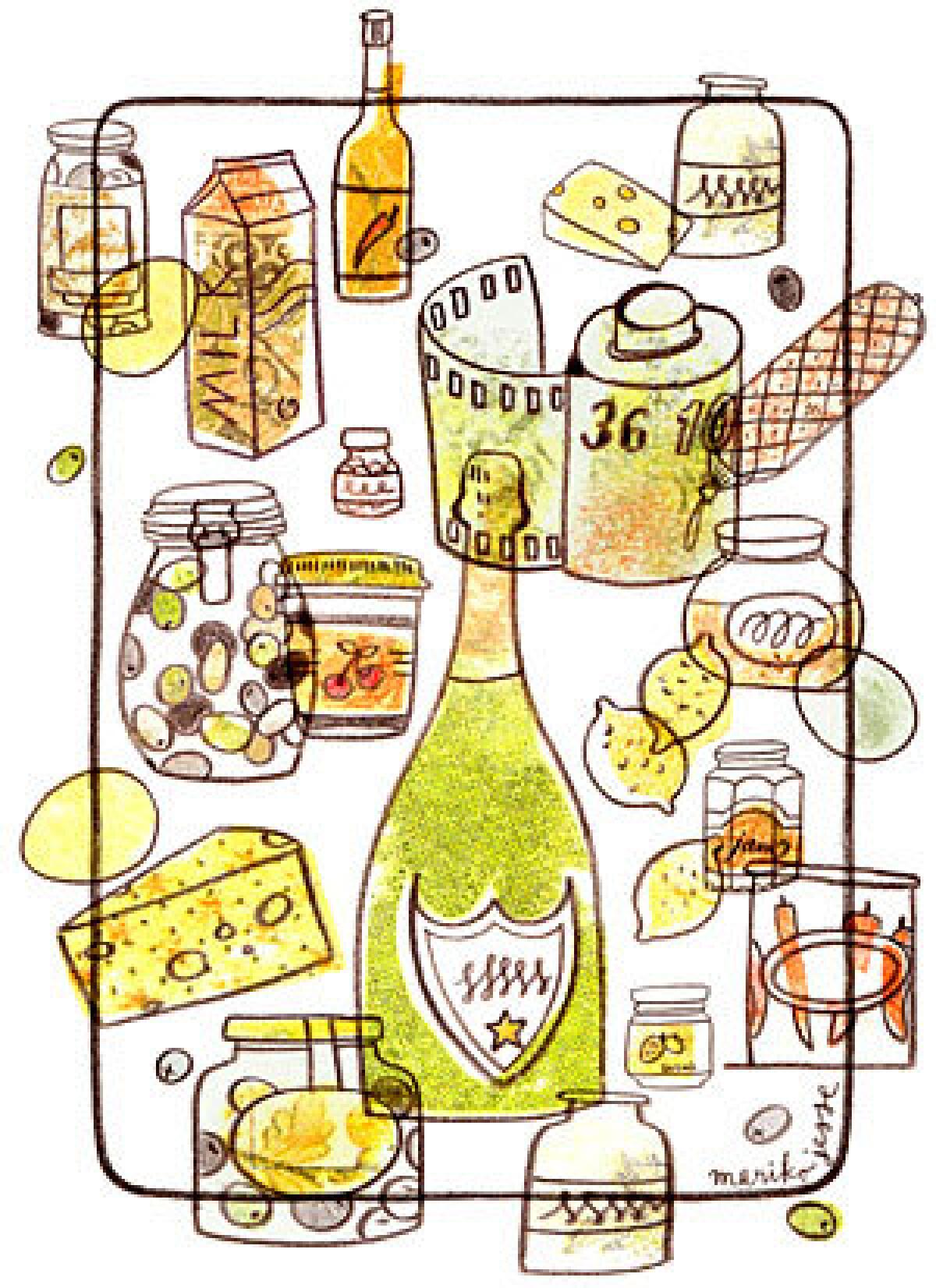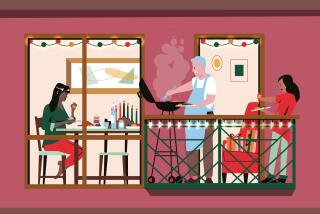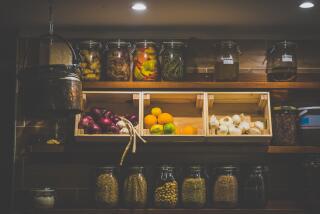The refrigerator personality test

I figured it was probably time to clean out my refrigerator when, digging around for a jar of jam, I found a roll of film. A roll of film! Remember those? How long it had been there, I don’t know. I not only have a digital camera, I’m on my second one.
Clearly, it was time for either a major cleaning or an archaeological expedition.
So I spent the next couple of hours sitting on the kitchen floor sorting through the collected detritus of several years of cooking. It was kind of like when Tim Gunn goes through one of his fashion victim’s closets on Bravo. I made a pile of things to keep, a pile of things to throw away, and a pile of things that maybe could be used with a little alteration.
Now, don’t get the wrong impression. My refrigerator wasn’t filthy by any means, just kind of disorganized (well, I did take the opportunity to give the shelves a good wiping down; memo to self -- ordering six dozen oysters for the holidays is a great idea, but next time line the drawer with newspaper to collect the liquid that leaks through the bag).
There were a few obvious things to toss. How many half-finished jars of jam does anyone really need? And how did I wind up with four opened jars of olives?
But mostly it was a matter of taking what 12-steppers would call a “searching and fearless inventory.” What items in my refrigerator do I actually use? What is really worth holding on to?
Past and future meals
I found that, perhaps oddly, there wasn’t a whole lot of actual food. Meat and produce I tend to buy on a dinner-by-dinner basis, with the exception of a box of Barhi dates and a bag of tangerines (oranges and grapefruit have thicker skins and can store at room temperature for the couple of days they last in my kitchen). Most of the fresh herbs I use come out of my garden.
Instead, my refrigerator contents -- at least the portion I kept -- divided pretty neatly into two categories: dishes I have made and things that will help me make dishes in the future. In other words, leftovers and condiments.
In the first category, there was a plate with a couple of helpings of potato gratin (I often make a big one as a side dish for Sunday supper and serve the leftovers a couple of times more with a salad for weekday dinners). And there was a plastic bag with what was left of my latest (successful) recipe test: a stew of white beans and shrimp.
Of course, there was the usual assortment of staples: eggs, milk, butter, maple syrup, a six-pack of beer, a couple of cans of Coke and a bottle each of white wine and Champagne. I had a half-carton of whipping cream; that ultra-pasteurized stuff doesn’t have much flavor but it does last forever and at the very least a tablespoon or two is a nice addition to French toast.
There was no meat, unless you count bacon, which I consider more of a spice, and dried salumi, which probably is really a kind of pickle.
There was plenty of cheese: blocks of Parmigiano, pecorino and Gruyère and a log of fresh goat, as well as a bag of rock-hard Parmesan rinds that are terrific for simmering with pots of beans or stews.
More unusual, there was a flat can of Cougar Gold, a cheddar-like cheese made by the Washington State University creamery that was a gift several years ago and has been sitting, waiting for an appropriate time to be opened. (Yes, it is canned; yes, it still must be refrigerated; as to whether it is actually worth all that trouble, it’s highly praised but we’ll just have to see.)
Jars, jars and more jars
But by far the biggest portion of my refrigerator contents were jars of little things that I go back to again and again to help make cooking easier. What would I do without Trader Joe’s Dijon mustard and cornichons, for example? Or a big jar of Best Foods mayonnaise?
One shelf in my refrigerator is devoted to pickles: those big caperberries (for the smaller capers I use salted, which don’t need to be kept cold), home-pickled green shishito peppers, roasted red peppers, chipotles in adobo, horseradish and what’s left of a jar of preserved Meyer lemons a thoughtful friend made for me.
Another shelf is full of assorted fats: nut oils go rancid very quickly at room temperature, so hazelnut, sesame and walnut, and also a tub of bacon grease (the extra-virgin olive oil of the South!).
There are also spices that are better refrigerated: sweet Hungarian paprika and smoked Spanish pimenton.
I found I had somehow acquired four opened jars of olives in addition to my crock of home-cured, so I combined them all and topped it off with olive oil. They’ll only get better in that mixed company.
Then there was the miscellaneous shelf, basically full of weird things that didn’t seem to fit anywhere else: plastic containers of caramelized onions and salted anchovies, two types of hot sauce (Vampire from Louisiana, and Rio Fuego from Rancho Gordo), a can of boquerones (Spanish pickled anchovies), tubes of wasabi, tomato paste and something called yuzu-kosho, which is a kind of yuzu-pepper paste I was briefly in love with. (Another note to self: What exactly is the shelf life of these things after all?)
I almost missed one more thing, just because it has been in the refrigerator for so long I’ve stopped noticing it -- a bottle of barbecue sauce that must be almost 20 years old. It’s from a test batch run by my late friend C.B. Stubblefield, way back before Stubb’s barbecue sauce became a supermarket staple. It’s in an old whiskey bottle with a handmade label and it’ll be there as long as I’m still cooking as a reminder of what a cook should be. Even in the chilly heart of a refrigerator, there’s some room for sentiment.
In a way, I guess a refrigerator’s contents are also a kind of personality test -- “tell me what you store, and I’ll tell you what you are” to paraphrase Brillat-Savarin.
But if that’s true, then I’m really starting to worry about that danged roll of film.
More to Read
Sign up for The Wild
We’ll help you find the best places to hike, bike and run, as well as the perfect silent spots for meditation and yoga.
You may occasionally receive promotional content from the Los Angeles Times.











